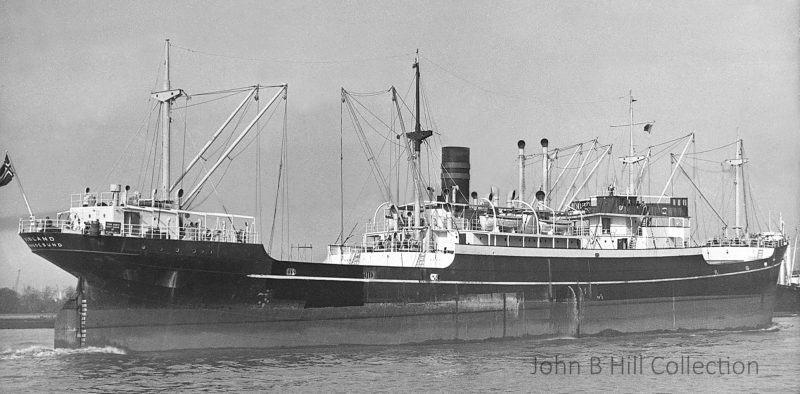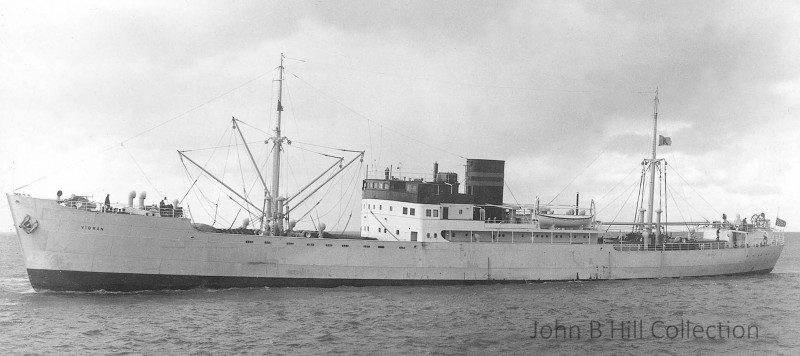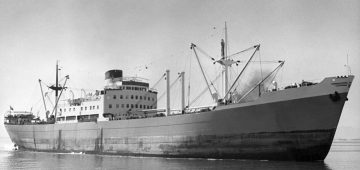Pacific Traders and Shuttle Tankers

Knutsen (or Knudsen) is a fairly common surname in Norway, with the most famous man of that name being Gunnar Knudsen, who was Prime Minister of Norway in 1908/09 and again between 1913 and 1920. He was also a shipowner in his home village of Borgestad near Porsgrunn with a fleet of a dozen steam tramps of up to 7,000 dwt with names beginning ‘B’ owned by A/S Borgestad. He was also Vice President of Det Norske Veritas classification society during 1891/98, and always laid much emphasis on the certification part of Det Norske Veritas work rather than ship survey. This was because he wanted new Norwegian steamships to travel worldwide and obtain freights on the certificates from Det Norske Veritas. However, the Knutsen family of this article lived in the port of Haugesund, a pretty little town with 29,200 current inhabitants and a hemispherical bridge across a narrow coastal waterway 35 miles to the north of Stavanger. All of the Bergen Line mailships passed under this bridge on their route to or from Newcastle to Stavanger and Bergen.
Ole Andreas Knutsen began shipowning in 1895, and passed the business to his son Knut in 1900, who was Managing Director for the next 46 years of Knutsen O.A.S. Shipping A/S (O.A.S. meant the son of Ole Andreas). The first ship in their long fleet list was the sailing ship Graafstroom of 1,403 grt and had been completed in August, 1879 by the Alblasserdam yard of J. Smit. It was to be a dozen years before their first steam tramp of 6,000 dwt was completed in January 1907 as O.A. Knudsen by the Craig, Taylor yard at Stockton on Tees, with triple expansion engines by John Dickinson & Sons Ltd. of Sunderland. She had a steel weather deck with a fo’c’stle of length 31 feet, poop of length 46 feet, and a two deck high bridge structure of 102 feet ‘midships. She gave sixteen years of service to the company, being torpedoed on 23rd March 1917 by UB-39 some thirty miles off Beachy Head, but survived only to run aground on 30th June 1923 on Gull Island in St. Mary’s Bay, Newfoundland while on a voyage from Sydney (NS) to Wabana with coal. The vessel was wrecked and her crew were fortunately saved.

Coastal wooden, iron or steel vessels of less than 500 grt were also traded along the Norwegian coastline e.g. Almar, Annaho, Fridthjov, Ingeborg, Leif, Gottfried, Vibran, Varo, and Varoy. The first ship with the family surname of ‘Bakke’ joined the fleet in 1913 from the Bergen yard of Bergens Mek Verksted as a raised quarterdecker of 2,000 dwt. She had dimensions of 244.5 feet by 37.5 feet with a depth of 15.7 feet and a quarterdeck of length 104 feet. She was torpedoed and sunk on 7th June 1917 by U-88 (Walther Schweiger) some sixty miles east of the Shetlands while on a voyage from New York to Rotterdam with wheat, her crew fortunately being rescued.

A frequent cargo was pitprops from the Baltic to Albert Edward Dock and Tyne Dock on the Tyne, Victoria Dock or Albert Dock at Leith, or King George Dock and Queen Alexandra Dock at Hull. The steamer Garsoy of 642 grt built on the Tees by W. Harkess & Sons Ltd. in 1890, had delivered pitprops at the end of 1916 to the Tyne and then loaded coal for Nyborg, sailing on 11th January. However, she went missing, cause unknown, and all of her crew of fourteen were lost. Other World War I losses included the old steamer Ida of 1,300 grt, built back in 1884 at Bergen as Stella for Jacob R. Olsen of Bergen, which was torpedoed and sunk by U-79 (Heinrich Jess) 50 miles from the Wolf Rock while on a voyage from Valencia to Liverpool with fruit, her crew being rescued. The steamer Lisbeth of 1,621 grt was less than two years old when she was torpedoed and sunk on 31st March 1917 by UB-23 (Hans Ewald Niemer) to the northeast of the North Hinder Light Vessel while on a voyage from Rotterdam to Swansea in ballast.

Subscribe today to read the full article!
Simply click below to subscribe and not only read the full article instantly, but gain unparalleled access to the specialist magazine for shipping enthusiasts.


Comments
Sorry, comments are closed for this item